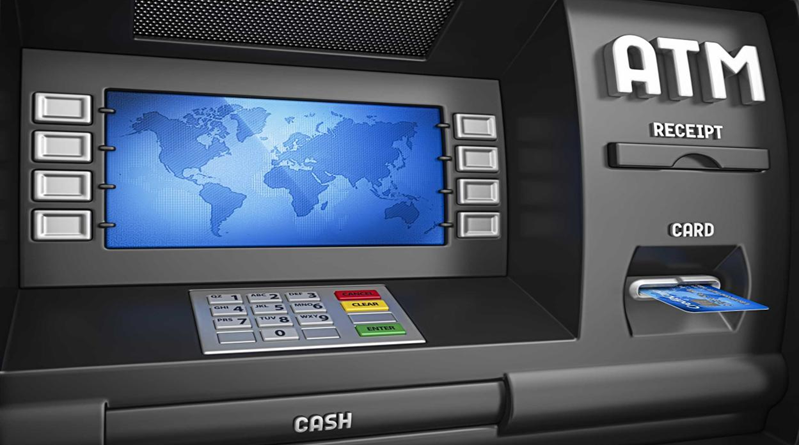Humanising the Automated Teller Machine
The use of Interactive Teller Machines or Personal Teller Machines, a next-generation banking solution that combines the technology and convenience of an ATM with the human touch of a bank teller, pioneered by Stanbic IBTC, is a welcome development, writes, Eromosele Abiodun
Technology has no doubt changed the face of banking in Nigeria. With remarkable frequency, banks have over the last decade churned out products and services, leveraging the power of technology and innovation to make life easy and convenient for people.
Today, practically every aspect of banking has become automated. Such banking terminologies as internet, online or virtual banking, mobile banking, e-banking, core banking solutions and telephone banking have since joined the growing list of banking lexicon in the country derived from technological application.
The notion of banking as a physical location where forms are filled in order to execute a financial transaction or obtain money is fading fast. With a mobile phone app or web page, the customer has his bank in his pocket; thanks to technology and digitalisation.
Technology underlines the capacity to exploit the opportunities offered by the digital age. New technologies, according to the 2013 Networked Readiness Index (NRI), compiled by the World Economic Forum (WEF) for its Global Information Technology Report (GITR), have been instrumental in transforming a wide range of sectors, including healthcare and farming. Even advanced economies are aggressively investing in technology to bolster their innovation capacity, which is central in driving productivity growth.
Rather than wait before a teller, fill some forms and linger on a queue to obtain cash, the automated teller machine (ATM) has become available, providing a quick and convenient way to withdraw and deposit money, as well as offer multiple service support such as checking account balances. All these require just a touch of a button and a debit card. ATMs are now a part of daily life.
That is the power of technology and innovation, especially as competition continues to intensify, with the attendant opening of battles on different fronts.
A major downside
Despite its convenience, reliability and precision, the ATM has a major downside, which lack of human factor. Because there is no well-developed sense of touch or feeling, the machine cannot decipher the challenge faced by the customer, just as the customer cannot communicate with the machine.
There is no way of exchanging feedback between man and machine. Even figuring out between the user and the machine that is wrong poses a challenge. This situation has prompted demands in different parts of the world for installation of voice services in the ATM to enable disabled persons, in particular, know the appropriate buttons to push.
Such clamour for humanising technology easily brings to mind a trail-blazing effort in Nigeria. Late last year, Stanbic IBTC pioneered the use of the Interactive Teller Machine (ITM) or Personal Teller Machine, a next-generation banking solution that combines the technology and convenience of an ATM with the human touch of a bank teller.
Deployed in collaboration with NCR, ITM combines video banking collaboration and remote transaction processing banking technology embedded within the machine to give customers the choice of self-service or connecting with a remote teller in a highly personalised, two-way real-time audio and video interaction. The machine’s interactive nature helps to close the ‘intimacy gap’ that is currently unavailable on the conventional ATM. With ITM, the challenge of the debit card disappearing into the machine, due to wrong PIN or system malfunction, is non-existent.
Customer experience is enhanced by ITM as it enables the individual perform banking operations such as account opening, cash deposit and withdrawal, cheque deposit and other general account enquiries like account balance, loan enquiries, card related services, among other functions, without having to use their debit cards. No other bank has launched a similar solution in Nigeria yet.
Convenience banking
Commenting on the development, Executive Director, Personal and Business Banking, Stanbic IBTC Bank, Mr. Babatunde Macaulay, emphasised that the bank would consistently deploy overarching innovations to drive home its quest for ‘convenience banking’ in Nigeria.
“The Interactive Teller Machine is available to all our existing and prospective customers. The use of ITM avails customers an added advantage over the conventional ATM in the sense that it allows customers to withdraw above the maximum allowable daily ATM cash limit of N150, 000, in addition to giving customers the option of choosing the exact denomination of currency of choice,” he said. It also enables high value cash deposits into personal and third party accounts, as well as enables cheque deposits, among other transactions,” he said.
Speaking at the launch event, NCR Managing Director, Elsayed Usama, said the company was delighted to partner with Stanbic IBTC for the launch of the innovative ITM.
He said the choice of Stanbic IBTC Bank for the pilot rollout of the Interactive Teller was informed in large part by its industry leadership in innovation, deployment of technology, security of its platforms, e-banking and its strong retail banking footprint.
“We are delighted to be partnering with a leading financial institution for the launch of this product. The partnership between Stanbic IBTC Bank and NCR is due to our shared value and vision to provide solutions to customers that will make their lives easier and create exceptional experiences,” Usama had stated.
The provider identified some of the special features of the ITM to include the two-way video and audio technology, which allows the customer see, speak or interact directly with a virtual teller when initiating a transaction on the machine; a signature pen and pad, which allows the customer to endorse and sign-off every transaction performed on his account; a scanner, which allows customers to scan small sized documents like utility bills, cheques and identity cards; and a camera, which is used to take the pictures of the customer using the machines as source of evidence or for the purpose of taking the customer’s photograph for account opening purpose.
Growing sophistication of customers
Such novelty, Macaulay stated, is underscored by the growing sophistication of customers who provide both the reason and incentive to innovate, adding that the increasing emphasis on timely access to financial services 24 hours makes it imperative to harness emerging technologies to provide convenient and efficient services.
He added: “A combination of competition, customer feedback and experience in other markets, both in Africa and abroad, as part of the Standard Bank Group, has sharpened our insights into the needs and behaviors of customers and how best to address such needs. This has been instrumental in our unrelenting quest to develop unique value propositions to meet our customers’ expectations, applying a multiplicity of platforms.”
The group, Macaulay stated, has long recognised innovation as the central driver of modern economic growth, hence every effort is made to deploy robust technology in driving all aspects of its operations.
Meanwhile, with the growing adoption of convenience in the Nigerian banking dynamic, the next stage in customers’ expectation will be ‘convenience plus,’ a wave of innovations in the sector that unlocks numerous opportunities for discerning institutions to meet the needs of their clientele.
A few years ago, discourse on the Nigerian banking landscape projected a new phase of growth that will be driven by technology, innovation and convenience, combining to place the sector on a global foothold. Interestingly, as amplified by current trends, that projected era has already arrived, almost unannounced. The innovation game, moreso in the digital space, according to experts, is infinite.
Source: thisdaylive




